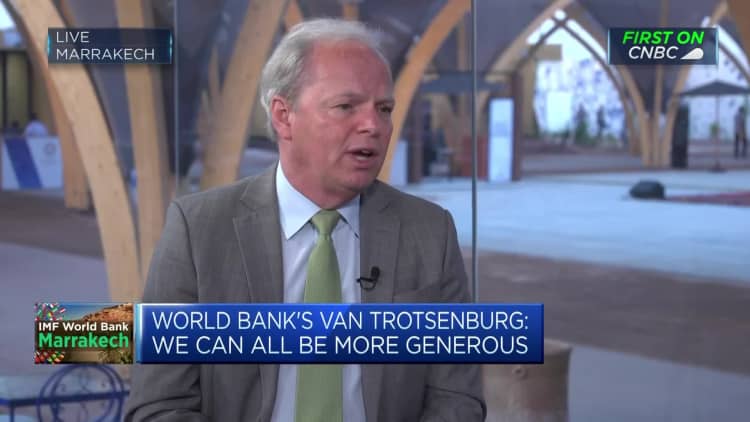Attendees arrive at the event campus on the opening day of the annual meetings of the International Monetary Fund (IMF) and World Bank in Marrakesh, Morocco, on Monday, Oct. 9, 2023.
Bloomberg | Bloomberg | Getty Images
The International Monetary Fund on Tuesday released its latest World Economic Outlook, which revised its forecast for U.S. growth higher while predicting slower expansion for the euro zone.
The IMF raised its U.S. growth projection for this year by 0.3 percentage points, compared with its July update, to 2.1%. It hiked next year’s forecast by 0.5 percentage points, to 1.5%.
Its euro area growth forecast for 2023 was revised down by 0.2 percentage points to 0.7%, meanwhile, and for 2024 was lowered by 0.3 percentage points to 1.2%.
It attributed the U.S. upgrade to stronger business investment in the second quarter, resilient consumption growth amid a tight labor market, and an expansionary government fiscal stance. Growth is nonetheless expected to slow in the second half of 2023 and into 2024, it added, due to slower wage growth, dwindling pandemic savings, tight monetary policy and higher unemployment.
In the euro zone, the IMF flagged divergence across its major economies this year — with the German economy expected to contract as trade slows and higher interest rates drag, as French external demand has outperformed and industrial production has caught up.
Its growth forecast for the United Kingdom was brought slightly higher to 0.5% for 2023, but lowered by 0.4 percentage points to 0.6% for 2024 as it expects “lingering impacts of the terms-of-trade shock from high energy prices.”
The IMF reiterated a global growth forecast of 3% for the year, and nudged its 2024 forecast by 0.1 percentage points to 2.9%.
“Several headwinds to global growth subsided earlier this year,” the IMF’s outlook said, as the World Health Organization said Covid-19 was no longer a global health emergency, supply chains largely normalized, and global financial conditions eased after turbulence in the Swiss and U.S. banking sectors was contained.
Challenges nonetheless remain, it continued, particularly a slowdown in manufacturing, a slow catch-up in services in some areas, and “globally synchronous” central bank tightening to cool inflation.
China’s growth momentum following its strict lockdown is fading, the IMF said, as it also deals with a property crisis. The body sees Chinese growth of 5% this year and 4.2% next year.


